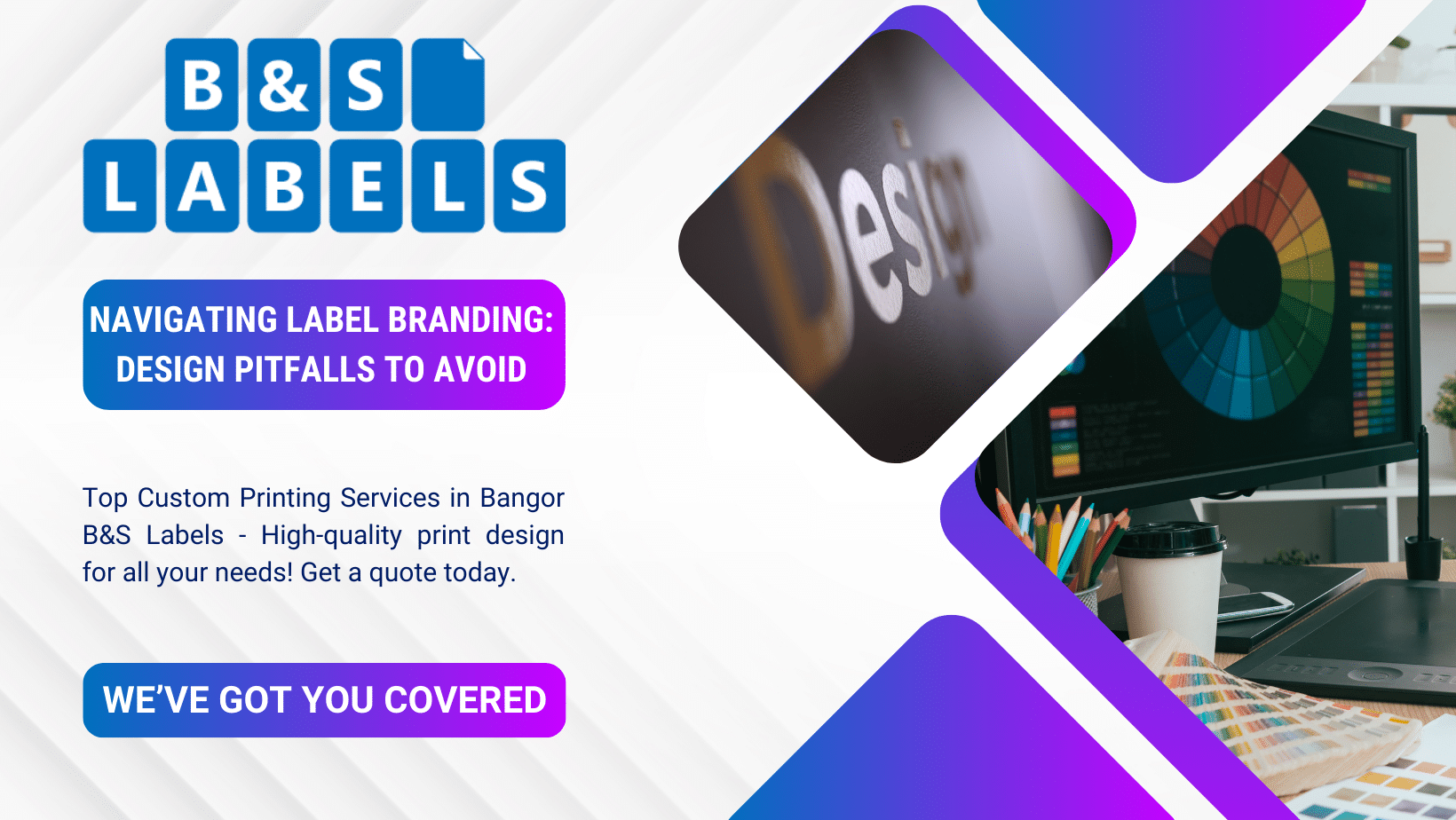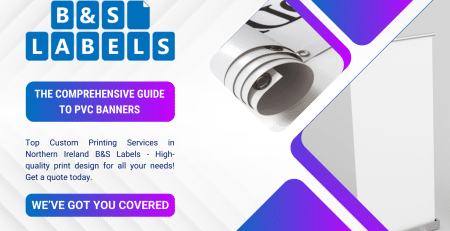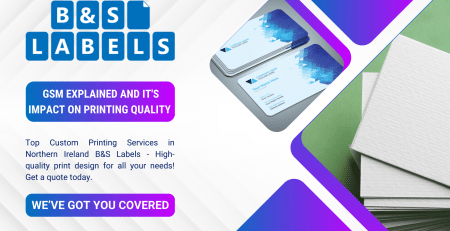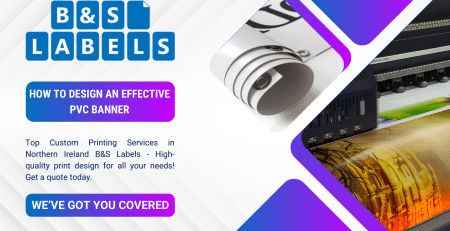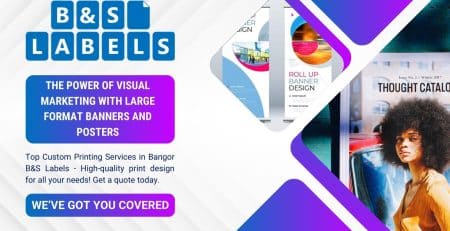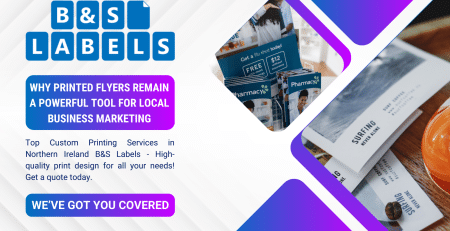Navigating Label Branding: Design Pitfalls to Avoid
Have you ever picked up a product and felt overwhelmed by its label, unsure of what it’s trying to convey? This is a common issue that can turn potential customers away. In this post, we’ll tackle the essentials of label branding and the design pitfalls that can obscure your brand’s message. We’ll discuss the importance of avoiding clutter for clarity, ensuring consistent branding, and selecting durable materials. By focusing on these areas, you’ll learn how to make your product stand out on the shelf and resonate with your audience. Whether it’s a menu item that needs to roll on in as a customer favourite or a new taste sensation on a roll, the right label design can make all the difference. Dive into this guide to ensure your label branding is as effective and appealing as possible.
Avoid Clutter in Label Design for Clear Branding and Avoid Design Pitfalls
In the realm of label branding, clarity is king. Overcrowded sticker designs can overwhelm consumers, detracting from the brand’s message. It’s essential to eliminate excessive graphics that distract rather than attract. Similarly, simplifying label text is not just about aesthetics; it’s about improving readability and engagement. A label that communicates effectively requires a balance between design elements and clear messaging. This section will guide you through streamlining your label’s visuals and text, ensuring your brand stands out on any shelf or package.
Eliminate Excessive Graphics That Distract Consumers
When it comes to label design, the shape and adhesive quality of labels play a crucial role in consumer perception. Overuse of intricate graphics can lead to a visual cacophony that obscures the product’s essence. Brands should focus on creating labels with a clear, engaging design that complements the packaging without overwhelming it. This approach not only enhances shelf appeal but also reinforces brand recognition.
Consumers often associate the simplicity of a label with the quality of the product inside. Therefore, it’s vital to use graphics sparingly and purposefully. A well-placed logo or a subtle design feature can be far more effective than a label covered in excessive imagery. By prioritising legibility and brand alignment, companies can ensure their products are easily identified and remembered, cutting through the clutter with labels that speak volumes through minimalism.
Simplify Label Text to Improve Readability and Engagement
Streamlining text on labels is not just a design preference; it’s a strategic move to enhance customer engagement. For instance, a business card-sized label on a bottle should convey the brand’s essence without overwhelming the eye. Incorporating a clear typeface and concise messaging ensures that even a quick glance can impart the product’s key benefits. This approach not only aids readability but also encourages a stronger connection between the product and its potential buyer, making it an ideal gift choice or a standout item on any shelf.
Moreover, the inclusion of elements like a barcode or foil accents should serve a purpose beyond mere decoration. A barcode neatly integrated into the design maintains functionality without sacrificing style, while selective use of foil can draw attention to the brand name or other critical information. By prioritising simplicity and purpose in label text, brands can create a powerful visual hierarchy that guides the consumer’s eye to the most important details, fostering an immediate understanding and appreciation of the product’s value.
Ensure Consistent Branding Across All Labels
Consistency in label branding is paramount for establishing a strong brand identity. Employing uniform colours that resonate with your brand and applying consistent fonts are essential steps in this process. These elements act as the ink that defines the postage stamp of your brand, ensuring recognition and recall. The upcoming sections will delve into the significance of colour consistency and font uniformity, offering insights into how these design choices can solidify your brand’s presence in the market. By adhering to these principles, your sticker CDs and other labelled products will present a cohesive and professional image to consumers.
Use Uniform Colours That Reflect Brand Identity
Uniform colours are a cornerstone of effective label branding, acting as a visual anchor that customers associate with a brand’s identity. When a brand consistently uses a specific palette across all labels, it not only enhances brand recognition but also conveys a sense of reliability and professionalism. This colour consistency ensures that whether a product sits on a crowded shelf or is viewed online, it is immediately identifiable as part of a cohesive brand family.
Choosing the right colours for a brand’s label design is more than an aesthetic decision; it’s a strategic one that can influence consumer behaviour. Colours evoke emotions and associations that can align with a brand’s values and messaging. For example, green often represents eco-friendliness and sustainability, which could be pivotal for brands in the organic market. By carefully selecting and adhering to a uniform colour scheme, brands can communicate their ethos and appeal to their target audience’s sensibilities.
Apply Consistent Fonts for Brand Recognition
Consistent font usage is a subtle yet powerful tool in label branding, directly influencing brand recognition. When a brand selects a particular font and applies it across all labels, it creates a visual signature that consumers begin to recognise and trust. This consistency in typography not only strengthens brand identity but also fosters consumer loyalty, as familiarity with the font can make the product more approachable and memorable.
Choosing the right font for a brand’s labels is a decision that should not be taken lightly. A font that is too ornate may be difficult to read, while one that is overly simple might fail to convey the brand’s unique personality. Brands must strike a balance, selecting a font that reflects their identity and is legible across various mediums and sizes. This ensures that whether the label is on a small bottle or a large box, the brand’s message is clearly communicated, enhancing the overall customer experience.
Select Appropriate Materials for Label Durability
Selecting the right materials for your labels is crucial for ensuring they endure through various environmental factors and maintain their appeal. This section will discuss the importance of choosing durable materials that can withstand conditions such as moisture, sunlight, and wear and tear. Additionally, we’ll explore sustainable options that resonate with environmentally conscious consumers, highlighting how eco-friendly choices can enhance brand image and customer appeal. These insights will help you avoid common pitfalls in label branding and ensure your product’s packaging remains both resilient and attractive.
Choose Materials That Withstand Environmental Factors
Choosing label materials that can endure environmental stressors is a critical consideration for maintaining brand integrity. Labels that fade, peel, or disintegrate can tarnish a brand’s image and lead to a loss of consumer trust. It’s essential for brands to select materials like vinyl or BOPP (biaxially-oriented polypropylene) that are known for their resilience against moisture, UV rays, and temperature fluctuations, ensuring the product’s label remains pristine from shelf to home.
Brands must also consider the application settings of their products when selecting label materials. For instance, products that are frequently handled or stored outdoors require robust materials that resist abrasion and wear. Utilising high-quality adhesives and finishes, such as laminate or varnish, can provide an additional layer of protection, safeguarding the label’s legibility and vibrancy, which in turn preserves the brand’s professional appearance and customer appeal.
Opt for Sustainable Options to Appeal to Customers
Opting for sustainable label materials is a strategic choice that resonates with the growing eco-conscious consumer base. Brands that use recyclable or biodegradable labels not only demonstrate environmental responsibility but also enhance their appeal to customers who value sustainability. This commitment to eco-friendly practices can set a brand apart, fostering a positive image and potentially increasing market share.
Moreover, the durability of sustainable labels need not be compromised. Innovations in eco-friendly materials mean that brands no longer have to choose between durability and sustainability. For example, labels made from stone paper or plant-based plastics offer the resilience required to withstand environmental factors while aligning with green initiatives. By adopting such materials, brands can deliver on both quality and environmental stewardship, meeting customer expectations on multiple fronts.
Prioritise Legibility in Label Typography
In the pursuit of effective label branding, prioritising legibility in typography is essential. Selecting font sizes that are easily readable ensures that information is accessible at a glance. Conversely, avoiding complex fonts is crucial for maintaining clarity and preventing consumer confusion. These considerations are vital for brands aiming to convey their message succinctly and create a lasting impression on their audience.
Select Font Sizes That Are Easily Readable
Ensuring that font sizes on labels are easily readable is a fundamental aspect of effective label design. A common pitfall is using fonts that are too small to read at a distance, which can frustrate customers and diminish brand perception. Brands should aim for a font size that allows consumers to quickly identify the product and its features, fostering a seamless shopping experience.
Readability is not just about the size; it’s also about the font choice. A clear, sans-serif font often works best for labels as it stands out against varying backgrounds and remains legible under different lighting conditions. This consideration is crucial for products that find themselves in diverse environments, from brightly lit stores to dimly lit cupboards at home, ensuring the label’s message is always accessible.
Avoid Complex Fonts That Affect Clarity
Complex fonts may seem like an attractive choice to convey a brand’s unique personality, but they often compromise clarity. A label’s primary function is to communicate essential information quickly and effectively; ornate typefaces can obscure this, leaving consumers puzzled rather than informed. Brands should opt for simplicity in their typography to ensure that product names, ingredients, and instructions are immediately legible, fostering a straightforward and positive user experience.
When selecting fonts for label branding, it’s crucial to consider the consumer’s ease of reading. Intricate scripts or stylised text may detract from the label’s legibility, especially when viewed from a distance or in poor lighting conditions. Brands that prioritise clear, sans-serif fonts not only enhance the readability of their labels but also demonstrate an understanding of customer needs, thereby building trust and loyalty in a competitive market.
Incorporate Essential Information on Labels
Effective label branding hinges on the inclusion of essential information that meets customer expectations and adheres to regulatory standards. Product details that customers actively seek must be presented clearly, while legal requirements are non-negotiable for compliance. This section will delve into the specifics of incorporating these critical elements into your label design, ensuring your product communicates its value proposition and maintains legal integrity.
Include Product Details That Customers Seek
When designing labels, brands must ensure that they include the product details customers are actively seeking. This includes clear information on ingredients, usage instructions, and any unique selling points that differentiate the product from competitors. By presenting these details prominently and legibly, brands can empower consumers to make informed purchasing decisions, fostering trust and enhancing the customer experience.
Labels serve as a silent salesperson; therefore, they should communicate essential information such as net weight, manufacturing dates, and contact information for customer service. Brands that effectively use this space to address consumer queries and concerns can significantly reduce confusion and increase the likelihood of repeat purchases. It’s about striking the right balance between informative content and a clean design to ensure the label remains a helpful guide to the consumer.
Add Legal Requirements to Comply With Regulations
Adhering to legal requirements in label branding is not merely a suggestion, it’s a mandate. Brands must ensure their labels carry all necessary legal information, such as allergen declarations, nutritional facts, and regulatory compliance symbols. This transparency not only builds consumer trust but also safeguards against legal repercussions, making it a critical aspect of label design that cannot be overlooked.
It’s essential for brands to stay abreast of the ever-changing regulations that govern label content. Regularly updating labels to reflect current legal standards demonstrates a brand’s commitment to compliance and consumer safety. This attention to detail can prevent costly recalls and maintain a brand’s reputation for reliability and integrity in the marketplace.
Test Label Designs Before Final Production
Before committing to final production, it’s wise to test label designs thoroughly. Conducting market research to gather feedback offers invaluable insights into consumer preferences and behaviours. Adjusting designs based on these consumer insights can significantly enhance the product’s market appeal. This section will delve into the importance of validating your label design with real-world data and refining it to meet customer expectations, ensuring your branding efforts hit the mark.
Conduct Market Research to Gather Feedback
Market research is a critical step in refining label designs before they reach the final production stage. By soliciting feedback from the target audience, brands can gain insights into consumer preferences, ensuring the label’s design, messaging, and functionality align with customer expectations. This proactive approach can reveal subtle nuances in consumer behaviour that might otherwise be overlooked, allowing brands to adjust their designs for maximum appeal and effectiveness.
Engaging with potential customers through surveys, focus groups, or A/B testing can provide a wealth of information that informs the label branding process. This feedback not only helps in avoiding common design pitfalls but also empowers brands to create labels that resonate with their audience. A label that has been vetted by the very people it aims to attract is more likely to succeed in a competitive marketplace, as it is crafted with direct input from those who matter most – the consumers.
Adjust Designs Based on Consumer Insights
Refining label designs with consumer insights is a strategic move that can significantly enhance a product’s appeal. When feedback indicates a certain element of the design is confusing or unattractive, brands have the opportunity to make targeted adjustments. This responsiveness not only demonstrates a commitment to customer satisfaction but also optimises the label for better performance in the marketplace.
Consumer insights often reveal the subtle preferences that can make or break a label’s success. For instance, if potential buyers express that a label feels too crowded, simplifying the design could lead to a cleaner, more attractive presentation that captures attention. By acting on such feedback, brands can avoid common branding pitfalls and ensure their labels resonate with their intended audience.
In label branding, the clarity and simplicity of design and text are paramount, ensuring that products capture consumer attention without overwhelming them. Consistent use of colours and fonts across all labels solidifies brand identity, fostering recognition and trust among consumers. The selection of durable and, where possible, sustainable materials for labels is essential to maintain brand integrity and appeal to environmentally conscious customers. By avoiding common design pitfalls and incorporating consumer feedback, brands can create labels that effectively communicate their message and resonate with their target audience.

